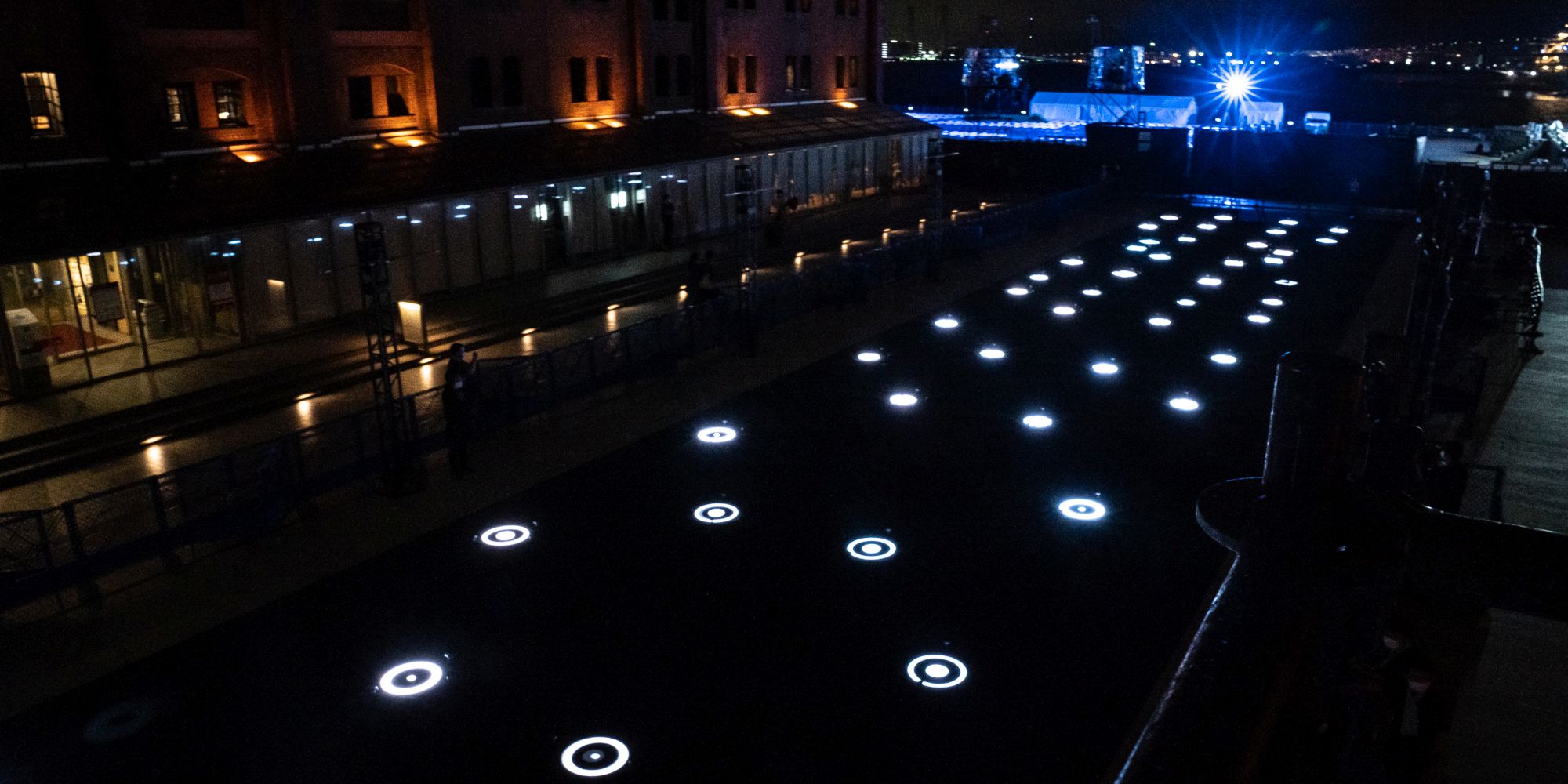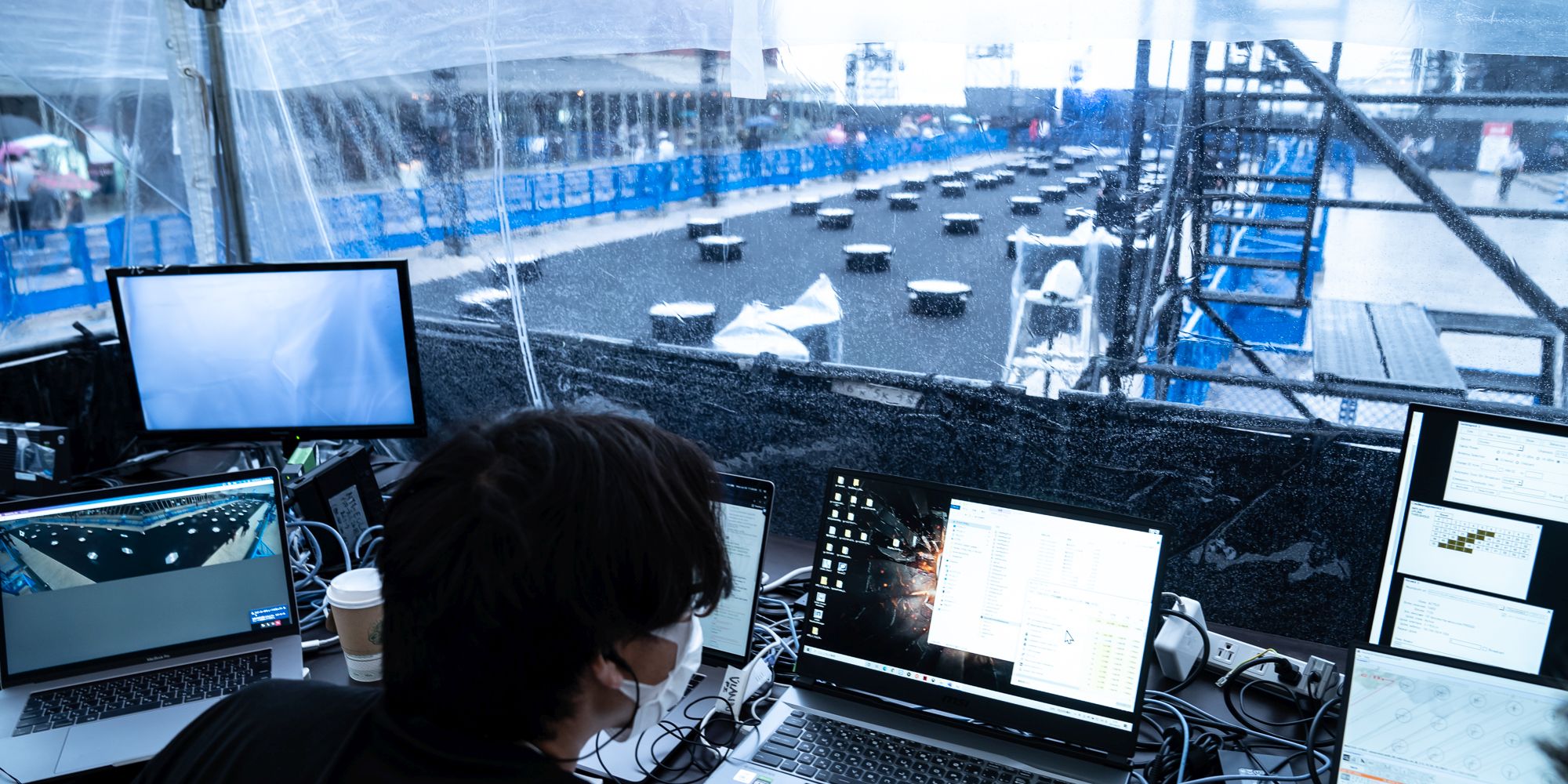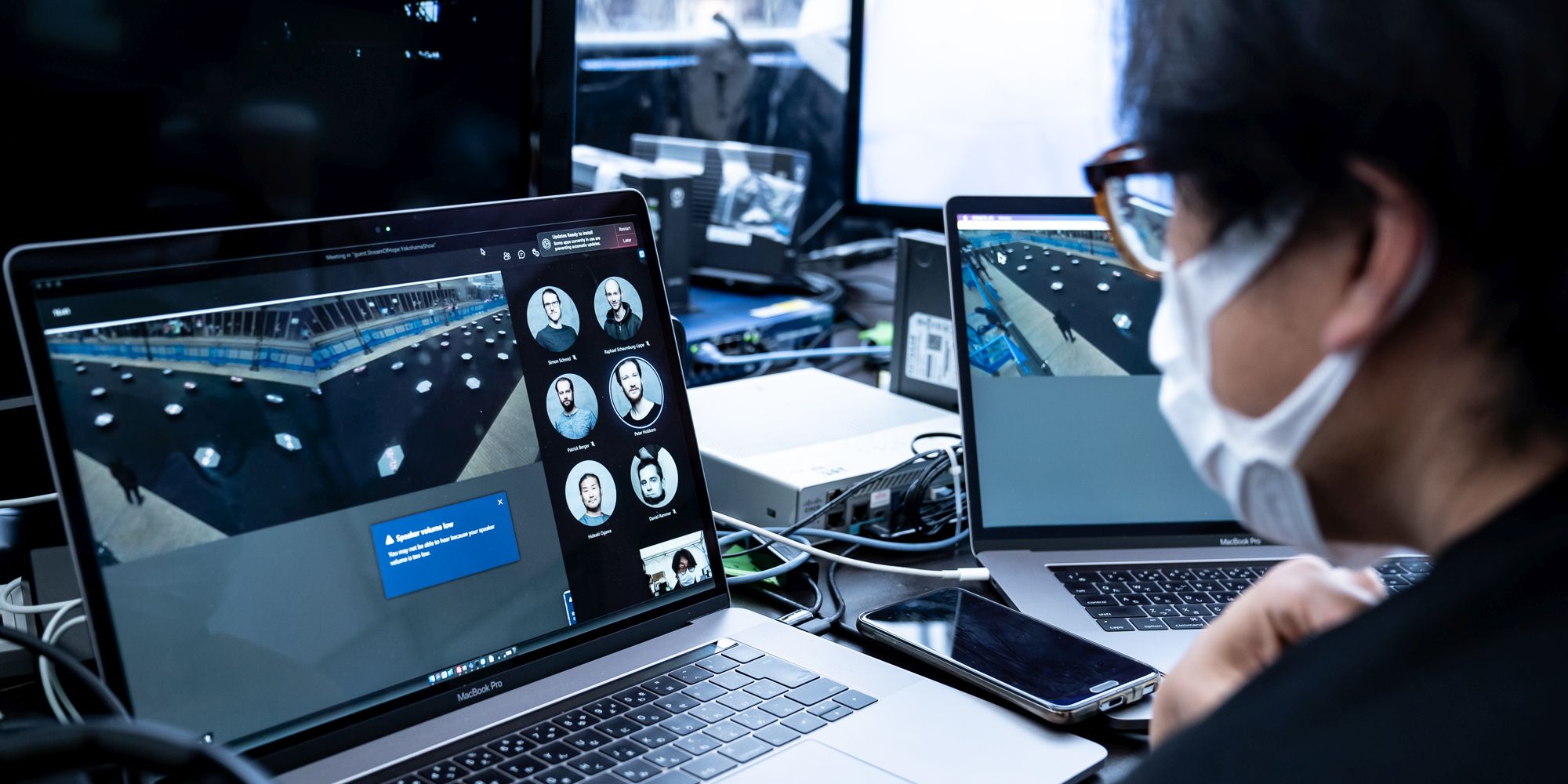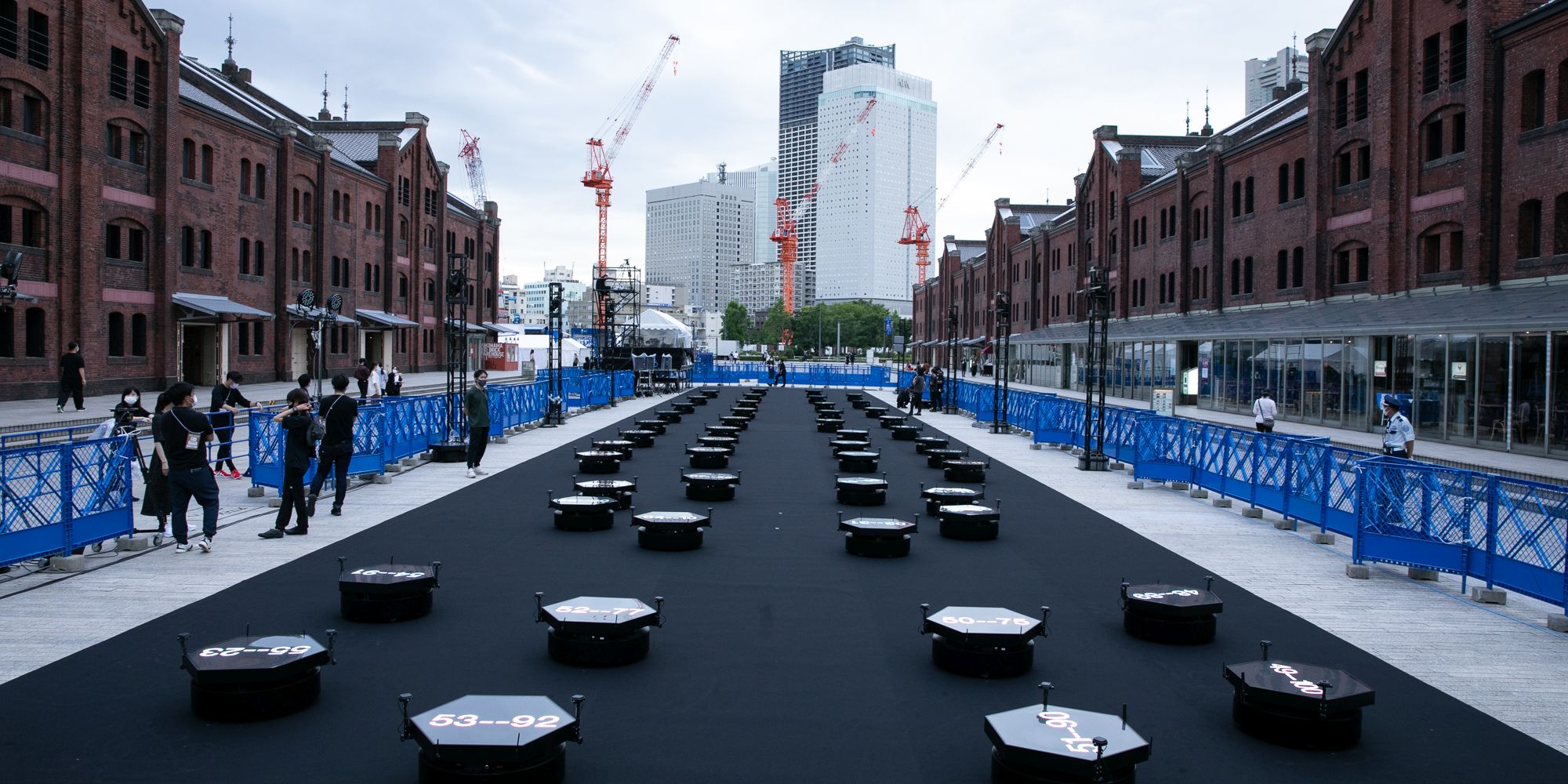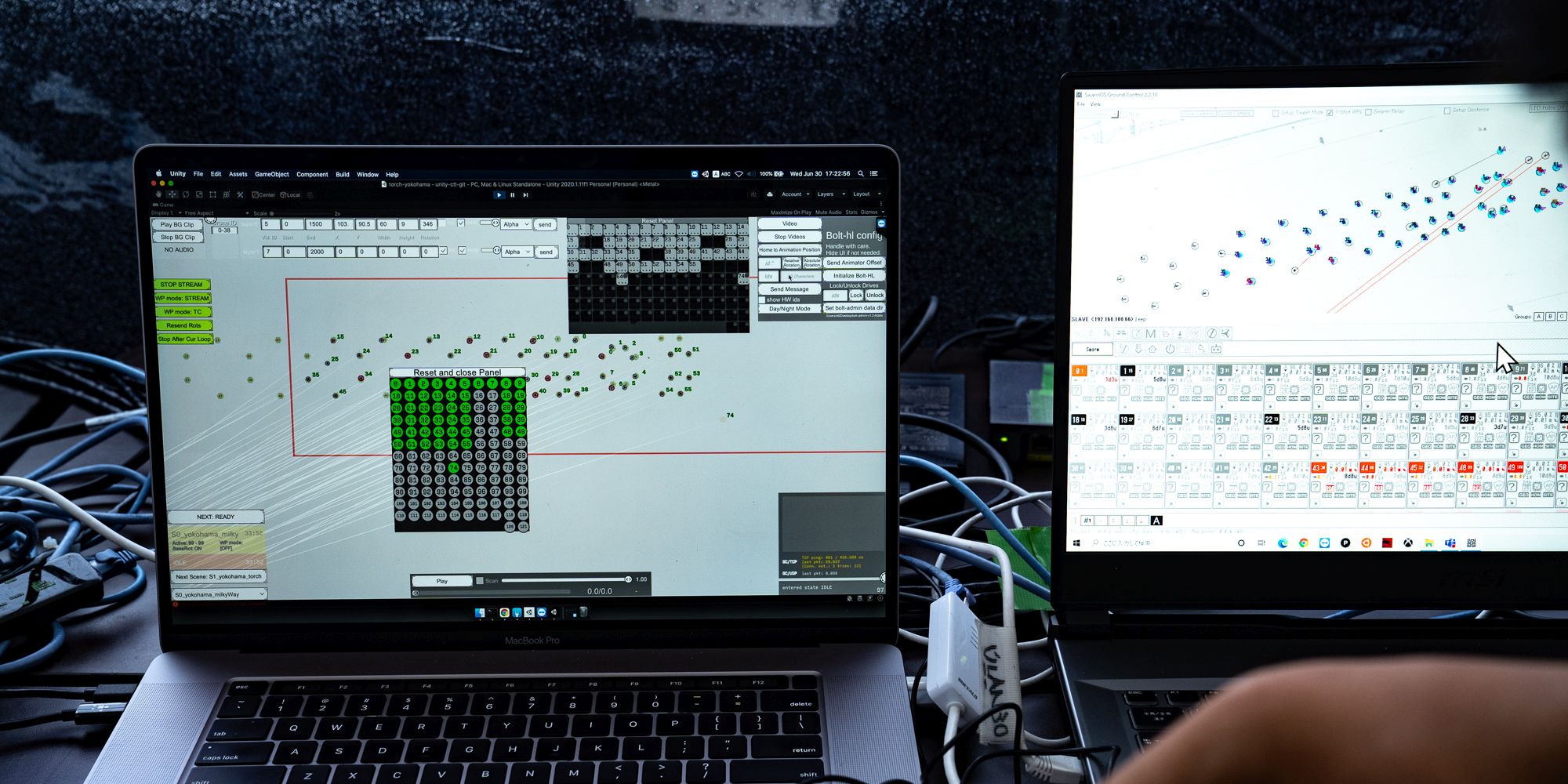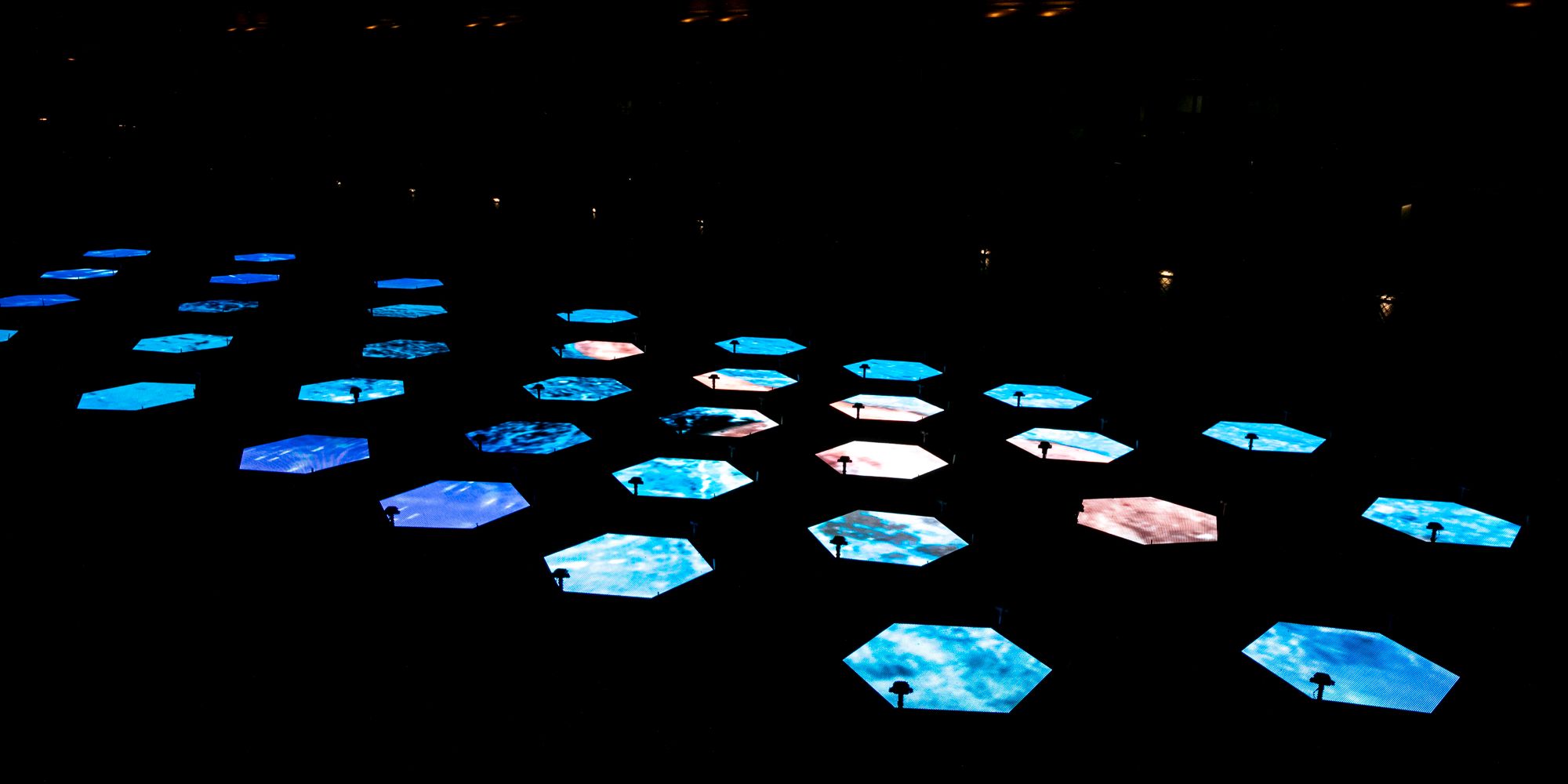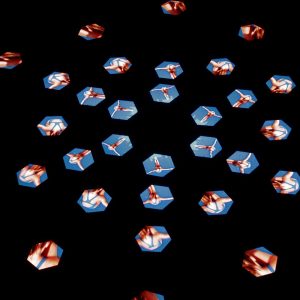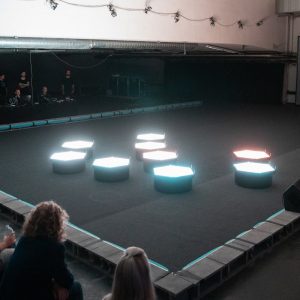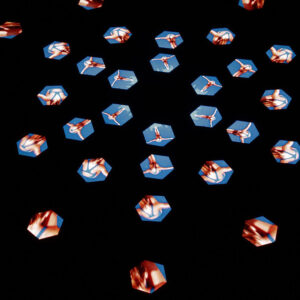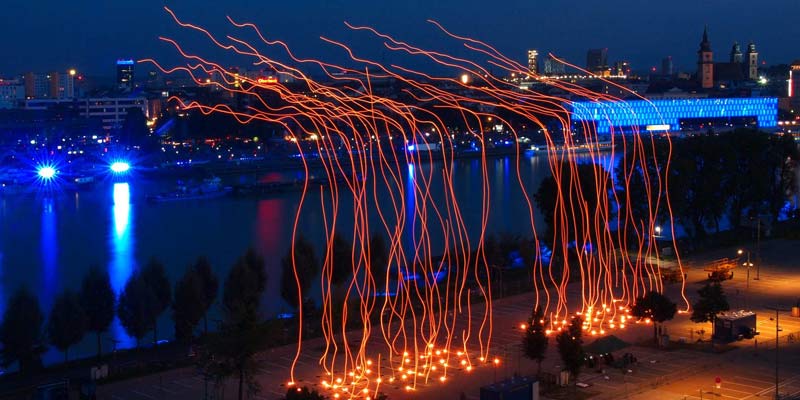Ars Electronica Futurelab’s Fluxels, a scalable swarm of ground robots equipped with hexagonal LED displays, brought about a new language of visual expression. The bots can transform visual content into an aesthetic performance via their integrated screens, leading to a vast range of potential applications. In collaboration with NTT, they have been optimized for use at international sporting events since the first prototype in 2017. In 2021, Stream of Hope finally offered a singular artistic opportunity for sports events in Osaka and Yokohama, visually enhancing the ceremony and creating a unique cultural moment.
Conceptually, the Fluxels are a very versatile medium. Given their modular nature, it is possible to show footage spanning multiple screens, rearranging the screens depending on the content, and, of course, locking the content to individual screens. The Fluxels are even capable of these actions simultaneously. To precisely control the huge bot swarm in an outdoor environment, the international team had to push the boundaries of satellite navigation, wireless communications and swarm operation, even as it relied on NTT’s cutting-edge communications technology and the Ars Electronica Futurelab’s feature-rich SwarmOS software.
A small swarm of drones already offered a taste of future possibilities for interaction between humans and robots at NTT’s research forum in 2017. This marked the start of a joint research initiative between NTT and the Ars Electronica Futurelab and demonstrated new ways of playful navigation and innovative methods of visually conveying information. By 2019, the shared vision had launched a swarm of 39 ground vehicles called Fluxels. Like the Spaxels seven years earlier, the Fluxels could be regarded as a new visual medium that is both real and virtual. Carrying hexagonal LED displays, the bots dance to create flowing mosaics in physical space.
The Fluxels first appeared at a special exhibition on “Sports Viewing Re-Imagined” at the Miraikan Museum in Tokyo in 2019. That event became the prologue to an even more ambitious mission: a swarm art performance for sports events in Osaka and Yokohama in 2020 (postponed to 2021). With their flowing, colorful and hopeful performance, 56 Fluxels accompanied athletes under the title Stream of Hope on their way. A major portion of the video content showed athletes of all kinds of sports and offered a visual spectacle.
Both the video animation and the physical movement during the performance were tailored to the meaning and movement of the athletes. The bots first showed beautiful imagery of the Milky Way – stars in which all our hopes and dreams are born. Accompanied by hopeful lights illuminating his path, the athlete was visually welcomed upon his arrival as a culmination of this spirit. In a moment of humility, when two athletes met, the bots’ screens exploded in joyful shapes and colors that reached even the darkest corners. The shapes then accompanied the second athlete.
Stream of Hope can also be read as a reference to the many uncertainties of the height of the COVID-19 pandemic. The character of the collaboration turned out to be unique and inspiring despite the challenging circumstances: With the Ars Electronica Futurelab developers unable to travel to Japan due to the pandemic, NTT’s researchers expanded their roles and the project team adapted to experimental robotics development across timezones and language barriers via conference calls, live video feeds and countless TeamViewer sessions. Technical approaches changed, goals shifted, timelines and event modalities kept transforming in an unpredictable period – but finally, a year later, in 2021, the robot swarm was there: Illuminating the moment with a beautiful visual celebration of progress, hope and perseverance.
The Fluxels were not just a particular “act” at a spectacular event. They were an exploration of a new way of structuring visual space with a novel physical carrier of information. At the same time, they proved the ambition of the Futurelab’s key technology of swarmOS:
A group of robots – whether airborne or driving – becomes more than the sum of its parts. Their entire logic can be beautifully abstracted and made available to artists, designers, and developers to create experiences that evoke delight, awe and inspiration and provoke our curiosity about what the future of swarm art might have in store.
Credits
Ars Electronica Futurelab: Patrick Berger, Kerstin Blätterbinder, Manuel Dobusch, Samuel Eckl, Stephan Feichter, Horst Hörtner, Peter Holzkorn, Otto Naderer, Nicolas Naveau, Hideaki Ogawa, Daniel Rammer, Raphael Schaumburg-Lippe, Simon Schmid
PARTNER: Musik – Michael Mayr, Displays – Multivision, Bots – Melkus Mechatronic
NTT (Nippon Telegraph and Telephone Corporation) Human Informatics Laboratories
Related Projects
Immerse yourself in our work
Interested in similar projects? The following Ars Electronica Futurelab projects are related to the ideas and concepts presented here. An overview of all our productions, cooperations and projects can be found in our project archive.

